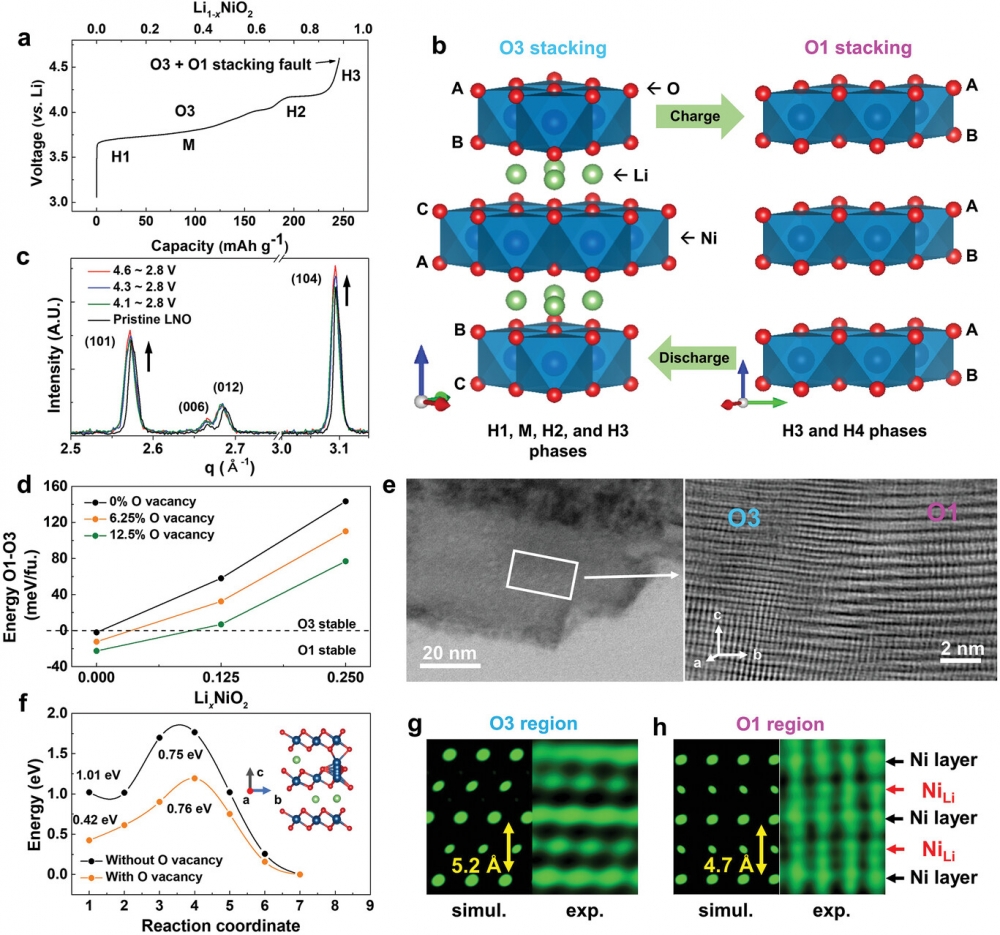
LiNiO2 (LNO) is a promising cathode material for next-generation Li-ion batteries due to its exceptionally high capacity and cobalt-free composition that enables more sustainable and ethical large-scale manufacturing. However, its poor cycle life at high operating voltages over 4.1 V impedes its practical use, thus motivating efforts to elucidate and mitigate LiNiO2 degradation mechanisms at high states of charge. Here, a multiscale exploration of high-voltage degradation cascades associated with oxygen stacking chemistry in cobalt-free LiNiO2, is presented. Lattice oxygen loss is found to play a critical role in the local O3–O1 stacking transition at high states of charge, which subsequently leads to Ni-ion migration and irreversible stacking faults during cycling. This undesirable atomic-scale structural evolution accelerates microscale electrochemical creep, cracking, and even bending of layers, ultimately resulting in macroscopic mechanical degradation of LNO particles. By employing a graphene-based hermetic surface coating, oxygen loss is attenuated in LNO at high states of charge, which suppresses the initiation of the degradation cascade and thus substantially improves the high-voltage capacity retention of LNO. Overall, this study provides mechanistic insight into the high-voltage degradation of LNO, which will inform ongoing efforts to employ cobalt-free cathodes in Li-ion battery technology.
